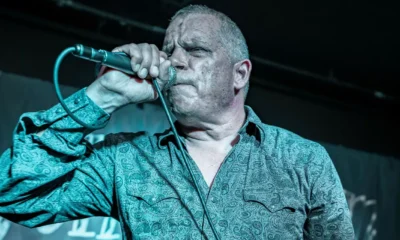addiction
Harm Reduction Transformed My Life: Why Is Arizona Lagging Behind?

In Arizona, the impact of substance use disorder resonates deeply within the community. A firsthand account from an individual who lost a best friend to a fentanyl overdose highlights the dire realities faced by many. Despite following treatment protocols, the absence of adequate support during times of relapse proved fatal.
The aftermath of trauma often leads individuals down dark paths. At 16, the author turned to heroin after facing severe trauma without mental health resources. This decision spiraled into years marked by substance abuse, homelessness, and multiple overdoses, illustrating a persistent struggle to reclaim stability.
A particularly harrowing moment came when the author found themselves on the kitchen floor, desperate and out of options. Attempting to end their own life with a dangerous dose, they survived—a pivotal moment that underscored the need for change.
This call for help led the author to a local harm reduction group. Unlike traditional treatment centers, this peer-led initiative focused on immediate survival rather than mandates to quit. Evidence supports this approach: medications like methadone and buprenorphine have been shown to reduce overdose deaths significantly.
In fiscal year 2022, Arizona’s efforts included distributing over 163,000 doses of naloxone (Narcan) through community programs, aiming to provide critical support in the face of rising overdose incidents.
Despite these initiatives, current legislative efforts in Arizona appear to penalize survival rather than support it. Proposed “drug-induced homicide” laws threaten to criminalize those who assist during overdoses, creating a chilling effect that discourages seeking help.
Historically, even access to basic harm reduction tools like fentanyl test strips faced legal hurdles. Although legal now, disparities in access remain stark—urban areas may offer naloxone through public libraries, while rural regions continue to struggle with shortages.
The overdose rate also starkly highlights racial disparities, with Black residents facing a significantly higher risk than their white counterparts. Addressing these inequalities requires a comprehensive approach that acknowledges the roles of stigma and systemic racism.
To combat stigma, Dream.Org is organizing a resource fair titled “Public Health is Public Safety.” Scheduled for June 28 in Phoenix, the event aims to create awareness of the difficult choices faced by those battling addiction.
Attendees will be immersed in scenarios that reflect the severe dilemmas individuals encounter, emphasizing the critical need for understanding and compassion.
True support for individuals struggling with substance use lies in harm reduction, which meets people at their points of need. Advocates urge a shift in policy and perception—choosing empathy over fear is crucial in addressing this ongoing crisis in our state.
We must acknowledge that the war on drugs has not produced the desired outcomes; it is time to revise our approach. A commitment to keeping individuals alive and providing genuine support could mark significant progress in combating this pressing public health issue.

















